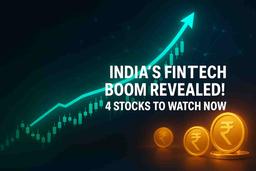India's Consumer Boom Slowdown? Goldman Sachs Warns as Food Prices Plunge – What RBI & Your Wallet Face Next!
Economy
|
Updated on 12 Nov 2025, 03:21 am
Reviewed By
Abhay Singh | Whalesbook News Team
Short Description:

▶
Detailed Coverage:
Goldman Sachs has identified a 'mass-consumption revival' as a key theme for India, driven by factors like GST benefits, wage growth, and tax cuts. However, the bank observed that this consumption-led rally peaked in September and has since declined. This trend is significant because food prices are a major determinant of household spending in India. Recent data shows food inflation has turned negative, with headline Consumer Price Index (CPI) cooling considerably.
This drop in food inflation has two main implications for monetary policy. Firstly, it increases the purchasing power of lower and middle-income consumers, naturally stimulating discretionary spending without needing further interest rate cuts from the Reserve Bank of India (RBI). Secondly, it reduces the risk of high overall inflation, allowing the RBI to remain neutral on its current repo rate of 5.5% and wait for more data before considering any further easing.
This presents a paradox: easier monetary conditions earlier were intended to boost credit and spending, but now consumption can improve organically due to lower food prices, without the RBI needing to cut rates. Policymakers must ensure that falling food prices don't signal a collapse in demand or rural income, and that wage gains and GST benefits translate into widespread consumption growth, not just urban spending.
Impact: This news has a considerable impact on investor sentiment, influencing valuations of companies in consumer discretionary and FMCG sectors. It also affects the Reserve Bank of India's monetary policy decisions, potentially delaying further rate cuts and influencing credit growth. Rating: 7/10.
Difficult Terms:
Mass Consumption: The purchase of goods and services by a large number of people, typically those with lower to middle incomes. GST Beneficiaries: Companies or sectors that benefit from the Goods and Services Tax, perhaps due to simplified tax structures or competitive advantages. Wage Tailwinds: Positive effects on income resulting from increases in wages. Demand Multipliers: Factors or events that significantly increase overall demand in the economy. Food Inflation: The rate at which the prices of food items increase. Year-on-Year Basis: A comparison of a metric from the current period to the same period in the previous year. Consumer Price Index (CPI): A measure that examines the weighted average of prices of a basket of consumer goods and services, used to measure inflation. Monetary Policy: Actions undertaken by a central bank to manipulate the money supply and credit conditions to stimulate or restrain economic activity. Central Bank: An institution that manages a state's currency, money supply, and interest rates. Rates: Refers to interest rates, the cost of borrowing money. RBI (Reserve Bank of India): India's central bank, responsible for monetary policy and currency. Monetary Easing: Actions by a central bank to lower interest rates and increase the money supply to boost economic activity. Neutral Stance: A monetary policy position where the central bank is neither actively trying to stimulate nor restrain the economy. Repo Rate: The rate at which the Reserve Bank of India lends money to commercial banks in India. MPC (Monetary Policy Committee): A committee constituted by the Reserve Bank of India to maintain price stability while keeping in mind the objective of growth. Data-Driven: Decisions made based on statistical data and analysis. Narrative-Driven: Decisions made based on prevailing stories or perceptions rather than hard data. CRR (Cash Reserve Ratio): The fraction of net demand and time liabilities that commercial banks must hold as reserves with the central bank. Credit Transmission: The process by which changes in monetary policy (like repo rate cuts) are passed on to borrowers through changes in lending rates. Headline Monetary Impulses: Major actions or changes in money supply directly influenced by central bank policy announcements.
Banking/Finance Sector

Indian Mutual Funds Paradox: Why AMCs Push Thematic Funds While Investors Turn Cautious?

Unlock India's $990 Billion Fintech Secret: 4 Stocks Poised for Explosive Growth!

Indian Mutual Funds Paradox: Why AMCs Push Thematic Funds While Investors Turn Cautious?

Unlock India's $990 Billion Fintech Secret: 4 Stocks Poised for Explosive Growth!
Crypto Sector

Bitcoin Mining's CRISIS: Profits VANISHING as Competition Skyrockets! Who Will Survive?
